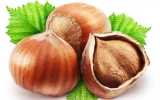Where Are Hazelnuts Grown? (With Map)
Hazelnuts are not just delights for your palate but also contribute significantly to the agricultural industries of certain regions. You might be surprised to learn that while the bulk of these nuts come from Turkey, particularly the Black Sea region, they also find a home in the soil of the United States, with Oregon being a notable producer.
Hazelnuts are primarily grown in Turkey, which accounts for approximately 70% of the world's production. Other significant producers include Italy, the United States (particularly Willamette Valley in Oregon), and Azerbaijan. The climate suited for hazelnuts is temperate, with mild winters and cool summers.
Here's the twist: even though these countries lead the production, hazelnuts thrive in various temperate climates around the globe, hinting that there's a world of hazelnut flavors and varieties we might be missing out on.
Summary
- Hazelnut trees need well-drained, rich soil that's slightly acidic. Aim for a pH level between 6.3 and 6.8. Good drainage is important to prevent waterlogging and to maintain a healthy root system.
- Your hazelnut trees will thrive in USDA hardiness zones 4-9, with temperatures that are not too extreme. While some varieties prefer zones 4-6, others are better suited for zones 7-9. Ensure your variety matches your zone for best results.
- Full sun is key; your hazelnut trees should receive at least 8 hours of direct sunlight every day. However, if you're in a particularly hot and sunny region, some afternoon shade can prevent scorching.
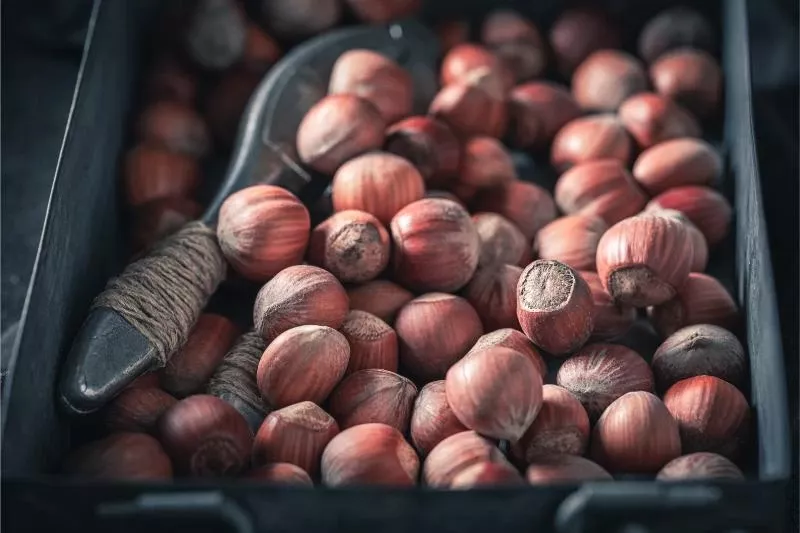
On this page:
Where Do Hazelnuts Grow Best?
Hazelnut cultivation involves specific soil and climate conditions, careful planting and maintenance, and vigilant disease and pest management.
| Growing Conditions | Hazelnut Requirements |
|---|---|
| Soil preferences | Well-drained, rich soil with a pH level between 6.0 and 6.5 |
| Climate and temperature | USDA hardiness zones 4–9 |
| Sunlight | Full sun; at least 8 hours of direct sunlight every day |
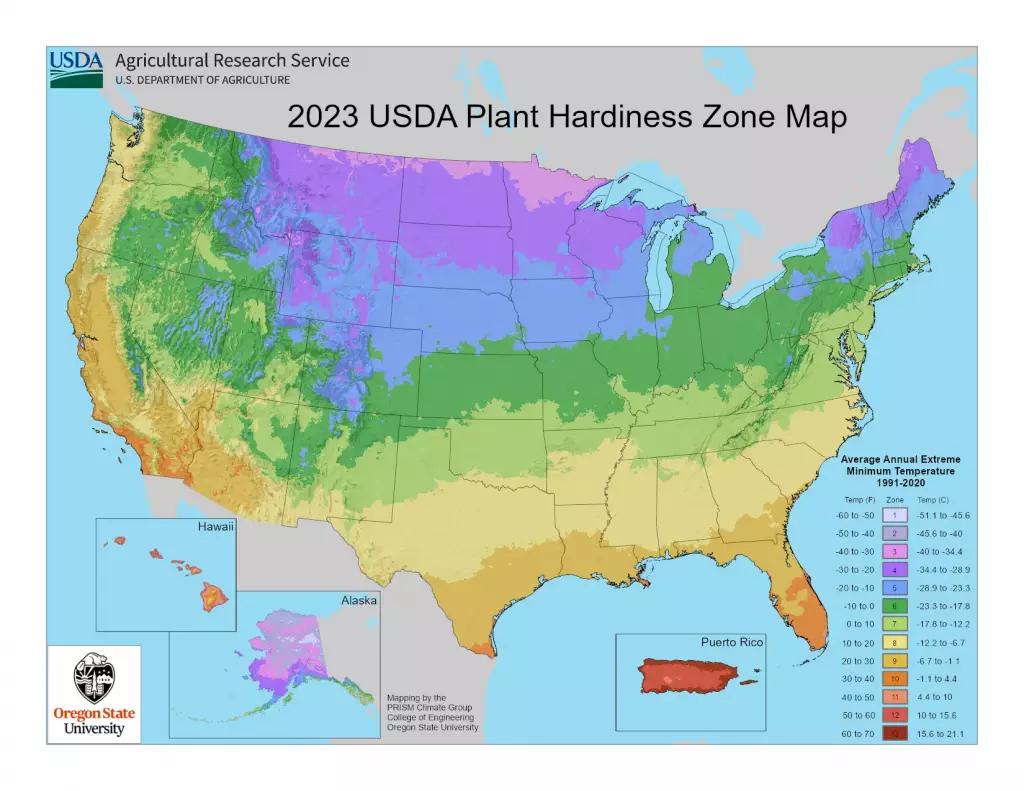
Soil and climatic requirements
Hazelnuts thrive in well-drained soils rich in organic matter with a pH level between 6.0 and 6.5. To ensure robust growth, plant them in areas with full sun to partial shade exposure.
Hazelnut tree growing zone
Hazelnuts are suited for USDA Hardiness Zones 4-9, with a preference for temperate climates that have mild summers and cool winters. Adequate water during the growing season is vital, especially when the shrubs are young.
Planting and maintenance
When planting hazelnuts, space your shrubs or trees about 15 to 20 feet apart to give them enough room to grow. Mulch around the base to retain moisture and regulate soil temperature.
Regular pruning is important to remove any suckers and maintain the desired shape. Prune during the dormant season to stimulate the growth of fruiting wood. Fertilizer applied in early spring can promote healthy growth, but be sure not to over-fertilize.
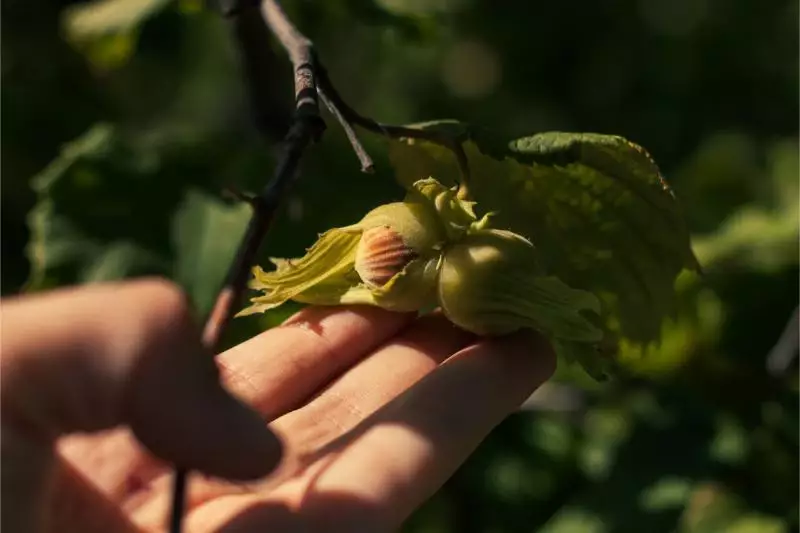
How many hazelnut trees can you grow per hectare? Find out here.
Disease and pest management
Keep an eye out for signs of Eastern Filbert Blight, a serious disease that affects hazelnuts, often evidenced by cankers on the wood. To manage pests and diseases, integrate preventative care, such as selecting disease-resistant varieties and ensuring proper air circulation through pruning.
Timely application of fungicides may also be necessary if blight is a known problem in your area. Monitor for pests and use appropriate control strategies as needed.
Where Are Most Hazelnuts Grown?
In the realm of hazelnut production, three regions notably stand out. You'll find the largest yields of hazelnuts coming from Europe, particularly in Turkey, followed by contributions from North America and Asia.
| Major Producing Country | Hazelnut Production Quantities |
|---|---|
| Turkey | 600,000–850,000 tons annually |
| Italy | 130,000–150,000 tons annually |
| United States (Oregon) | 100,000–120,000 tons annually |
| Spain | 30,000 tons annually |
| Georgia | 20,000 tons annually |
| Chile | 16,000 tons annually |
| Azerbaijan | 10,000–15,000 tons annually |
Europe's hazelnut regions
In Europe, the climatic conditions are highly favorable for hazelnut cultivation, especially in countries like Italy, France, Georgia, and Azerbaijan. Turkey, however, stands out as the largest producer, with regions in the east of the country providing the perfect growing conditions for these flavorful nuts.
North American production
Crossing over to North America, the United States specifically Oregon, marks its territory as a top producer, with up to 5 percent of the world's hazelnuts coming from this lush state. It's a smaller slice of the pie but a crucial one.
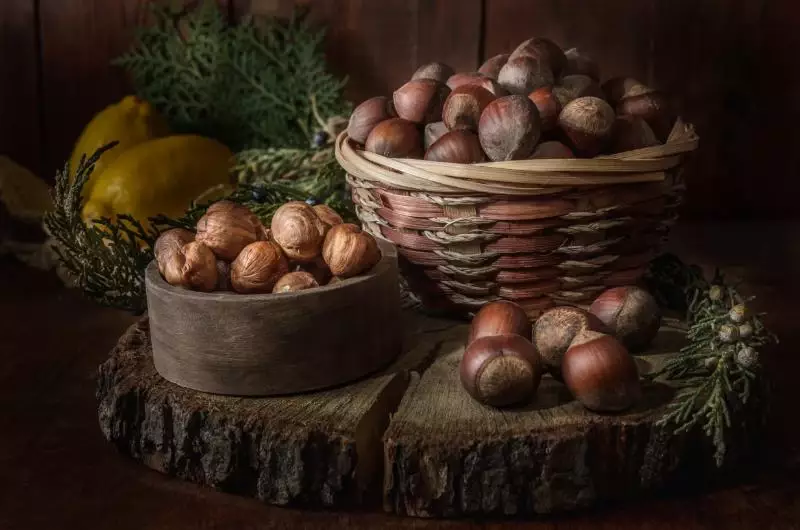
The majority of hazelnuts are grown in Oregon's Willamette Valley, which produces 99% of the commercial hazelnut crop in the United States and 5% of the global hazelnut supply. Oregon has around 80,000 acres devoted to hazelnut production.
Various cultivars like 'Barcelona' and 'Daviana' have adapted well to the Pacific Northwest. These varieties offer a heavy yield of the large, flavorful nuts that might find their way into your kitchen, showcasing the remarkable adaptability of hazelnut trees to different environments.
Hazelnuts in Asia
While Europe and North America are key players, Asia also has skin in the game. Azerbaijan is an emerging contender, contributing to the diversity of hazelnut origins. Their production numbers are growing, showing Asia's potential in the hazelnut market.
Hazelnut Varieties and Species
When you explore the world of hazelnuts, you'll mostly encounter varieties within the genus Corylus. These include both species cultivated for their nuts and wild types that vary widely in their characteristics.
Common hazelnut species
The Corylus genus houses several species of hazelnuts, among which Corylus americana and Corylus avellana are prominent.
Corylus americana, commonly known as the American hazelnut or American filbert, thrives in the eastern and central parts of the United States, showcasing resistance to cold climates. Its European counterpart, Corylus avellana, or the European hazelnut, produces the bulk of commercial hazelnuts, renowned for their size and flavor.
Want to know how long do hazelnuts take to produce? Read this article.
Regional cultivars
Regional cultivars of hazelnuts are tailored to suit specific climates and soil conditions. For example, the American hazelnut is adapted to diverse environments across the Midwest, East, and Southeast United States.
Conversely, various hybrid cultivars of European hazelnuts reflect efforts to enhance disease resistance and nut quality to meet market demands, proving cultivars' pivotal role in hazelnut attributes.
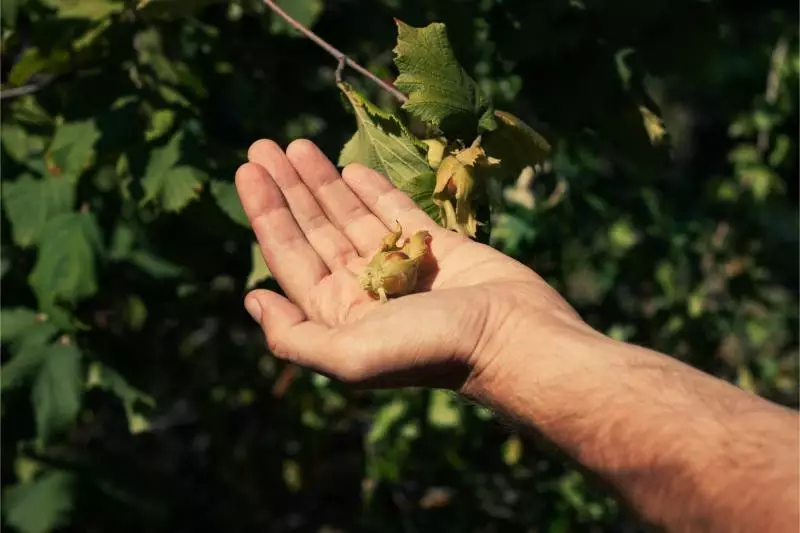
Cultural and Historical Significance
Hazelnuts hold a storied place in both the traditions and economies of various cultures. They have been valued for their taste, nutritional benefits, and symbolic meanings.
Hazelnuts in tradition
You might find it fascinating that hazelnuts have long been intertwined with folklore and customs. They were often considered symbols of wisdom and fertility. For instance, in some traditions, hazelnuts were carried as charms for good luck or given as gifts to bring about prosperity. In Europe, hazelnuts, known as cobnuts, are a part of Christmas traditions, especially in German cookies and pastries.
Historic use and trade
Throughout history, hazelnuts have been more than just food; they've had economic significance. Evidence of hazelnut processing on Colonsay Island in Scotland dates back to 6000 BC, indicating their use in trade and sustenance. Hazelnuts native to America were gathered by indigenous peoples, and in places like Barcelona, hazelnuts have been central to local commerce.
The rich environments of Europe and Asia have also supported hazelnut growth, making them a valuable commodity for trade. Their importance is not just for humans but wildlife as well, with many species relying on hazelnuts for nourishment.
Hazelnuts in cuisine
You'll often find hazelnuts as a star ingredient in baking. They're a classic addition to cookies and cakes, offering a toasty crunch. Praline, a sweet concoction of caramelized sugar and hazelnuts, is widely used in pastries and chocolates. Why not try making a hazelnut praline spread to elevate your morning toast?
Snack food companies frequently use hazelnuts in granola bars and trail mix for that extra bite. If you're keen on exploring hazelnut flavors, salads with roasted cobnut (a type of hazelnut) provide a surprisingly delightful texture and flavor.
Hazelnuts are not just delicious – they're packed with nutrients that benefit your body. You'll get a good amount of protein and fiber in each serving, helping you feel full and energized. Plus, they're an excellent source of vitamin E, which is key for maintaining healthy skin and eyes.



